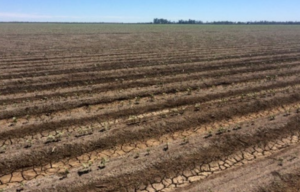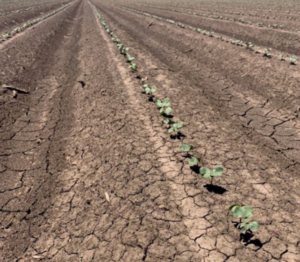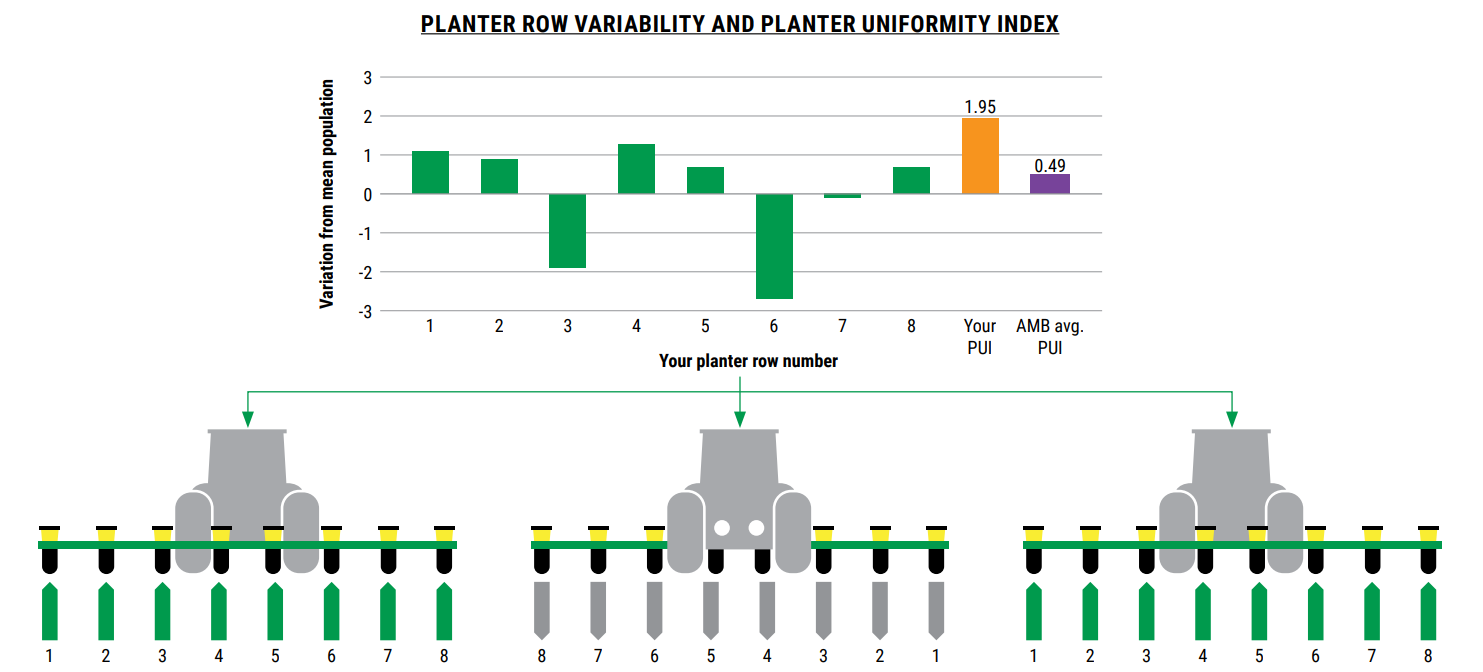Plant Stand Uniformity and Plant Uniformity Index
Plant stand uniformity is the consistency between the plant stand in each of the rows in a field. Plant stand uniformity can be affected by poor planter maintenance, issues with planter calibration, seed bed preparation, and seed germination.
Uniformity across plant stand is important as it affects yield potential. Cotton can compensate for some gaps in the plant stand by producing more fruiting sites along fruiting branches, but this will also delay maturity, which will influence micronaire and can also delay harvest. A low plant population can cause issues when something goes wrong. Populations that have gaps with greater than two 50 cm gaps in five metres can have reduced yield potential, as plants struggle to compensate for these gaps.
To measure plant uniformity, choose a section of the field and designate that row as one. In that row count the number of plants in a 5 metre section and continue this process in the next rows for as many rows as planter boxes are on the planter unit. To give a good idea if variations are due to field preparation or issues with the planting unit repeat this process a total of three times. As the tractor works through the field its direction changes and as a consequence, so does the position of the planter box number. An example of how to count rows can be seen in Figure 3. This information could help identify if there is a problem with one (or more) of your planter boxes that needs attention. It may also help inform whether a paddock needs to be replanted.

Figure 1: Shows a field has various gaps in the plant stand.

Figure 2: Shows a field that is more uniform across the field.

Figure 3: An illustrative example of how to count rows.
Planter Uniformity Index (PUI) is a score that CSD use in the Ambassador Program to factor in plant stand uniformity, standard deviation from average plant stand uniformity, as well as final establishment percentage. The lower the score the better the final establishment percentage and consistency of the plant stand across the field. Here are some examples in Table 1.
| Average uniformity of rows (plants/m) | Average Uniformity (plants/m) | Final Establishment % | PUI | ||||||||
| Row 1 | Row 2 | Row 3 | Row 4 | Row 5 | Row 6 | Row 7 | Row 8 | ||||
| E.g. 1 | 8.9 | 10.8 | 8.6 | 9.1 | 11.2 | 11.8 | 9.7 | 12.5 | 10.3 | 43.3 | 1.85 |
| E.g. 2 | 10.9 | 11.9 | 10.9 | 11.3 | 11.3 | 11.8 | 11.5 | 11.1 | 11.2 | 76.3 | 0.13 |
Table 1: Examples of row uniformity, the average uniformity, final establishment percentage and the resulting PUI.
As part of the FastStart Cotton Program, Cotton Seed Distributors and Syngenta are offering one irrigated and one dryland cotton grower a trip for two people to a yet to be determined Australian destination, including return domestic airfares, six nights’ accommodation, meals, car hire and more. Entries will be judged based on a combination of the establishment percentage and Planter Uniformity Index (PUI) of each eligible crop.
For more information on how to get your crop off to a fast start, visit the FastStart Cotton Program website and enter the FastStart Cotton Establishment Awards.
© Cotton Seed Distributors Ltd 2022. General guide only; not comprehensive or specific technical advice. Circumstances vary from farm to farm. To the fullest extent permitted by law, CSD expressly disclaims all liability for any loss or damage arising from reliance upon any information, statement or opinion in this document or from any errors or omissions in this document. Roundup Ready Flex®, Roundup Ready®, Bollgard II® and Bollgard® 3 are registered trademarks of Monsanto Technologies LLC, used under licence by Monsanto Australia Ltd. Insect control technology incorporated into these seeds is commercialised under a licence from Syngenta Crop Protection AG. Sicot, Sicala, Siokra and Sipima cotton varieties are a result of a joint venture research program, Cotton Breeding Australia, conducted by CSIRO and Cotton Seed Distributors Ltd (CSD). CSD is a partner in the CottonInfo joint venture, in partnership with Cotton Research Development Corporation and Cotton Australia.